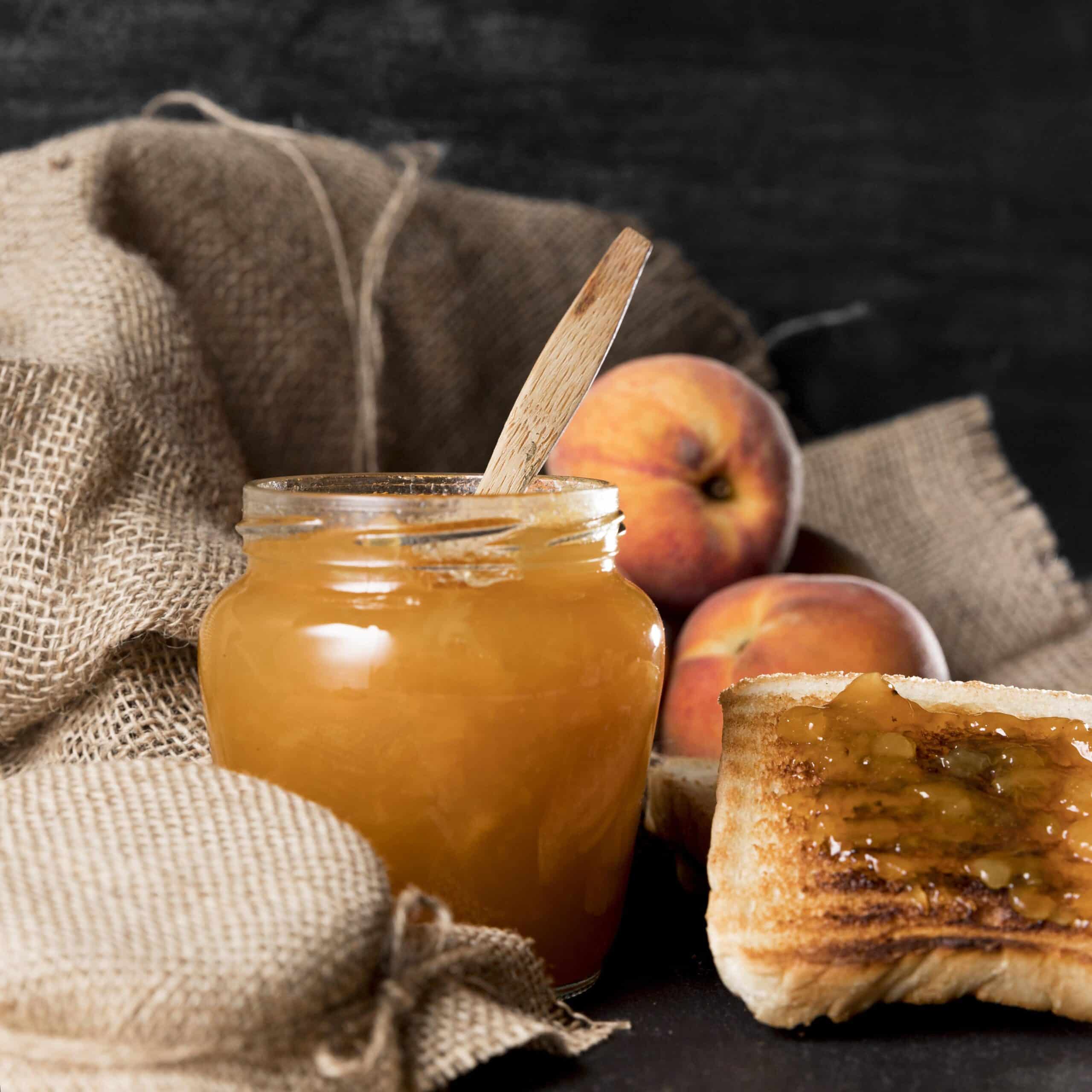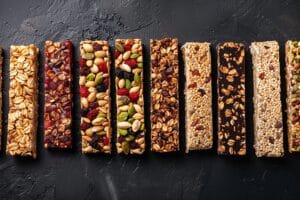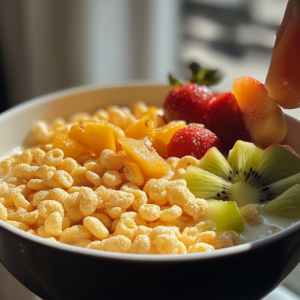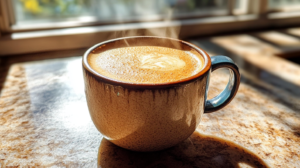If you’re an apple lover, this apple jam recipe is a must-try. The sweet and tangy flavor of apples, combined with a few simple ingredients, results in a delicious spread that you can enjoy all year round. Whether you’re new to jam-making or an experienced preserver, this guide will walk you through everything you need to know about making homemade apple jam.
Why Make Homemade Apple Jam?
Making your own apple jam at home comes with several benefits:
- Healthier Option: You control the ingredients, ensuring a healthier product free from preservatives.
- Cost-Effective: Homemade jam is often cheaper than store-bought options, especially when apples are in season.
- Customization: You can adjust the recipe to suit your taste, whether you prefer a sweeter jam or one with a bit of tang.
Plus, there’s something incredibly satisfying about preserving fruits at home. It allows you to savor the taste of fresh apples long after the season is over.
Tip: For more insights into the benefits of homemade jams, check out this article.
Ingredients and Preparations
Choosing the Right Apples
The type of apple you choose is crucial for the flavor and texture of your jam. Here are some of the best apples to use:
- Granny Smith: Tart and firm, ideal for adding a tangy flavor.
- Honeycrisp: Sweet and flavorful, though with a shorter season.
- Jonagold: A sweet-tart combination that’s great for jam.
- Gala: An all-around good apple with a balanced taste.
- Fuji: Sweet with a slight tartness, holds up well when cooked.
You can mix and match these varieties to create a unique flavor profile in your jam.
Additional Ingredients
Apart from apples, you’ll need a few other ingredients:
- Sugar: Essential for flavor and preservation. It helps keep the apple chunks from becoming mushy during cooking.
- Lemon Juice: Prevents the apples from browning and aids in setting the jam.
- Pectin: A natural thickener that helps the jam achieve the perfect consistency.
Note: For an in-depth look at the role of pectin in jam-making, see this guide.
Prepping the Apples
Before you start cooking, you need to prepare the apples:
- Peel, core, and chop the apples into small, uniform pieces. This ensures even cooking and a consistent texture in the jam.
- Soak the apple pieces in a solution of lemon juice and water to prevent browning.
- Drain the apples and toss them with sugar and lemon juice. Let this mixture sit overnight in the refrigerator. This process, called maceration, draws out moisture and helps maintain the apples’ firmness during cooking.
Making the Apple Jam
The Basic Apple Jam Recipe
Ingredients:
- 6 lbs firm, ripe apples (12 cups after peeling, coring, and chopping)
- 2 cups sugar
- 1/3 cup lemon juice
- 1 packet of powdered pectin
- 1 cinnamon stick (optional)
Instructions:
- Mix: Combine the apples, sugar, and lemon juice in a large bowl. Cover and refrigerate for at least 6 hours or overnight.
- Cook: Transfer the apple mixture to a large pot. Stir in the pectin and add the cinnamon stick. Heat over medium heat until the mixture reaches a rolling boil.
- Boil: Continue boiling the mixture until it reaches 220°F (adjusting for altitude if necessary). Stir frequently to prevent sticking.
- Jar: Remove the cinnamon stick and ladle the hot jam into sterilized jars, leaving about 1/2 inch of headspace. Wipe the rims clean, seal with lids, and process in a water bath canner for 10 minutes for half-pints or 12 minutes for pints.
Troubleshooting Common Issues
- Runny Jam: If your jam doesn’t set properly, it might be due to undercooking or insufficient pectin. Try re-cooking the jam with additional pectin.
- Overcooked Jam: Overcooking can lead to a jam that is too thick and sticky. Keep a close eye on the temperature to avoid this.
Apple Jam Recipe Variations
For a twist on the classic recipe, try these variations:
- Spiced Apple Jam: Add ground cinnamon, nutmeg, and allspice for a warm, spiced flavor.
- Citrus Twist: Substitute lime juice for lemon juice for a slightly different flavor profile.
- Vanilla Apple Jam: Scrape a vanilla bean into the mixture before cooking for a subtle, sweet aroma.
Preserving and Storing Apple Jam
Canning Apple Jam
Canning is the most common method of preserving apple jam. Here’s how to do it:
- Water Bath Canning: Place the filled jars in a water bath canner. Make sure there’s at least 1 inch of water covering the jars. Bring the water to a rolling boil and process for the appropriate time (10 minutes for half-pints, 12 minutes for pints).
- Inverted Jar Method: After filling and sealing the jars, turn them upside down for two minutes, then right-side up. This method is quicker but less reliable for long-term storage.
Safety Tip: Always follow canning safety guidelines to prevent contamination and ensure your jam is safe to eat.
Freezing Apple Jam
If you prefer not to can, you can freeze your apple jam. Simply pour the jam into freezer-safe containers, leaving some space for expansion, and store in the freezer for up to six months.
Serving Suggestions and Creative Uses
How to Serve Apple Jam
Apple jam is incredibly versatile. Here are some delicious ways to enjoy it:
- On Toast: Spread it on sourdough toast or warm biscuits for a classic treat.
- With Cheese: Pair apple jam with sharp cheddar or creamy brie for a delightful contrast of flavors.
- In Yogurt: Stir a spoonful into plain yogurt for a fruity twist.
Creative Uses for Apple Jam
Don’t limit yourself to just spreading it on bread. Here are some creative ways to use apple jam:
- Baking: Use it as a filling for pies, tarts, or pastries.
- Sauce: Mix it into sauces for pork or chicken to add a sweet and tangy flavor.
- Glaze: Combine it with mustard or soy sauce to create a glaze for grilled meats.
Frequently Asked Questions
What’s the difference between apple jam and apple jelly?
Apple jam is made from the whole fruit, including the pulp, while apple jelly is made from the juice of the fruit. This results in a smoother texture for jelly and a chunkier consistency for jam.
Is apple jam the same as applesauce?
No, applesauce is simply pureed apples, often with added sugar and spices, while apple jam is a spread made by cooking chopped apples with sugar and pectin until it thickens.
What is the difference between apple butter and apple jam?
Apple butter is a thick, smooth spread made by cooking apples with sugar and spices until it becomes very concentrated. Apple jam, on the other hand, contains chunks of apple and has a more spreadable consistency.
Can I reduce the sugar in my apple jam?
Reducing the sugar can affect the texture and preservation of the jam. Less sugar may result in a runnier jam, and the reduced preservative effect could lead to quicker spoilage. If you choose to reduce sugar, it’s recommended to can or freeze the jam to ensure it stays fresh.
Advanced Tips and Customizations
Advanced Canning Techniques
- Altitude Adjustments: If you live at a high altitude, reduce the cooking temperature by 1 degree for every 500 feet above sea level to ensure your jam sets properly.
- Large Batches: Use larger canning equipment if you plan to make and preserve large quantities of jam at once.
Customizing the apple Jam Recipe
Get creative with your apple jam by adding unique ingredients:
- Herbs: Try adding a sprig of rosemary or thyme during cooking for a savory twist.
- Alcohol: A splash of brandy or bourbon can add depth to the flavor.
Conclusion and Final Thoughts
Making homemade apple jam is a rewarding experience that allows you to enjoy the taste of fresh apples year-round. With the right ingredients, careful preparation, and a bit of creativity, you can create a delicious and versatile jam that’s perfect for any occasion. So, why not give it a try? You might just discover a new favorite way to preserve and enjoy apples.





